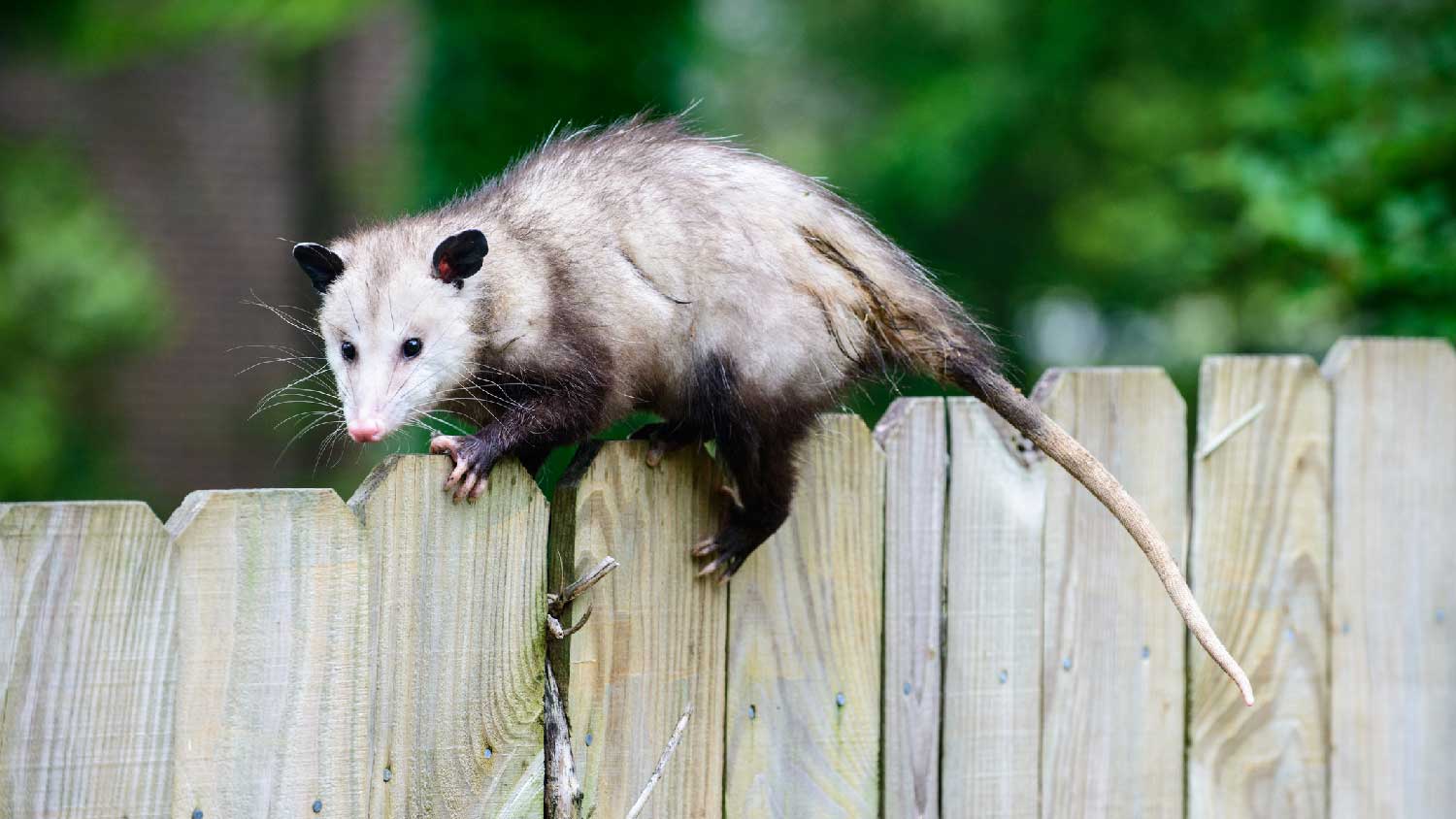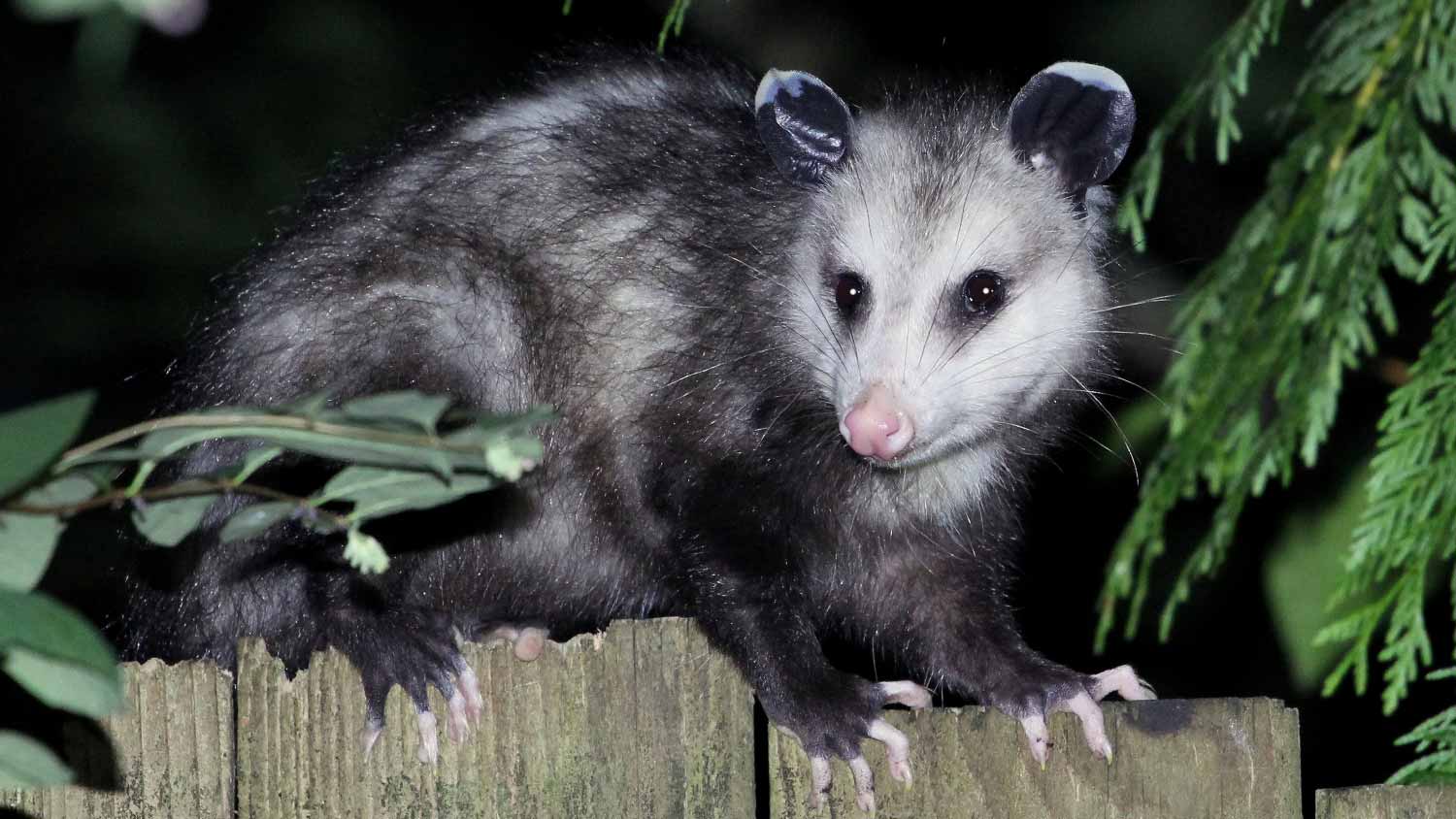
Your skunk removal cost will depend on several factors, including type, location, and more. Our guide will cover everything you need to know about skunk removal costs.
It’s more than the name


In North America, “possum” and “opossum” have become colloquially interchangeable when referring to the same animal.
The animal in question is the Virginia opossum, North America’s only marsupial.
Australian possums are different animals, but they are closely related to opossums.
There’s a critter in your trash: Triangular face, hairless rat-like tail, and possibly screaming at you. Is it a possum or an opossum? In North America, we call these animals possums, but that’s not technically correct. While we use the terms “possum” and “opossum” interchangeably, these are distinct animals with notable differences. We’ve created a guide to help you distinguish possums versus opossums.
Possums and opossums are different animals with distinct characteristics and mannerisms.
| Type of Difference | Opossum | Possum |
|---|---|---|
| Size | 15–20 inches | 13.75–21.65 inches |
| Color | Grey-white | Grey-brown to red-brown |
| Tail | Hairless | Bushy |
| Location | North America | Australia |
| Habitat | Farmland, woodlots, and residential areas | Forests, woodlands, and residential areas |
| Disease | Can carry disease | Carries fewer diseases |

These marsupials are closely related but visually distinct.
Possums have bushy tails with fur extending right down to the tip. Opossum tails are thin and relatively hairless, like a rat’s tail. Both animals’ tails are fully prehensile, allowing them to wrap around an object and move around at will.
The North American opossum has a mostly gray body, white face, and black legs and ears. Possums, on the other hand, can vary in color—ranging from grey-brown to red-brown, with a different colored underbelly depending on the type of possum. There have been reports of black, brown, and albino opossums, but those are fairly rare occurrences.
Opossums have an elongated face, giving them a longer snout, smaller eyes, and slender, rounded ears. Possums have a stout snout, with big beady eyes and ears that face forward like a large mouse. Opossums have white faces that contrast with their darker bodies, while possums tend to be uniform in color.

Worlds away, yet so closely related, possums and opossums aren’t even on the same continent.
Virginia opossums are native to North America and the only marsupial found on the continent. Possums are predominately located in Australia, with certain species native to other Oceanic regions like New Guinea and Sulawesi.
Possums and opossums are attracted to similar habitats, including forested areas, woodlands, and urban areas, but you’ll only find certain species of possums in heavily forested areas. As burrowing scavengers, opossums like hiding under sheds and woodpiles, whereas possums tend to be attracted to ceilings and roofs.
Both animals are also prone to den. Possums use more natural surroundings for their dens, and can be found in hollow branches, tree trunks, fallen logs, rock cavities, or hollow termite mounds. Opossums use their surroundings to set up shop and can often be found using the abandoned dens of other animals, cavities in trees, or trash heaps.
Possums and opossums are omnivores, so they eat both meat and vegetables as part of their diet. Opossums have a much meatier diet and often eat insects, worms, reptiles, birds and their eggs, berries, fruits, small mammals, and carrion. While possums eat meat such as bird eggs, baby birds, and some insects, their diet mainly consists of vegetation like eucalyptus leaves, shrubs (mainly wattles), herbs, flowers, and fruit.

Possums and opossums live quite similarly. Neither are aggressive creatures and will only hiss and bare their teeth if they’re scared or perceive you as a threat. A well-known quirk of opossums is playing dead to avoid confrontation, but this behavior isn’t something they can control; it is a response to extreme fear.
As nocturnal animals, both the possum and opossum can mostly be seen wandering around at night and are attracted to dark places during the day. Possums are very territorial, but thankfully, opossums are not. You’ll still likely need to hire a local wildlife removal pro to get them off your property if they’re causing problems, but it won’t be as much of a challenge.
Lyle did a great job removing asbestos shingles from our front porch roof. They worked together with our roofer to make sure that the new roof was able to be installed on the same day that Lyle removed the asbestos shingles.
I called College Hunks and they were able to come out quickly and give me a quote. The young men were very professional and courteous. They called before arriving and came when they said they would. They removed the items efficiently. I would hire them again and recommend them.
Annual energy savings tune up. Cleaned furnace, started humidifier, and showed me how to remove, clean, and replace the electronic filter.
They were very professional and efficient. They worked hard and removed all that I wanted out. Very nice guys!
A wild goose chase. Maybe this is no big deal since this was not an emergency - not a tree that had crashed through my roof - just a nuisance tree that needs to be removed. Even so, it strikes me as quite careless and perhaps a bit rude.
It was a good experience. During the call, we ran through a series of questions to determine what was in my chimney. We determined it was likely just a bird or a mouse. Thankfully the animal couldn't get into the house because the flute was shut. I was able to wait until Monday for them to...
CREW, LORI, RICHARD, AND ANDY, WORKED STEADILY FROM 8:15 AM TO AFTER 9PM, FINISHED ROOF AND REMOVED ALL DEBRIS. WORK AREA AS CLEAN AS BEFORE THEIR ARRIVAL. RETURNED NEXT AM TO REMOVE A FEW MARKS FROM WHITE GUTTERS. CREW WAS POLITE AND PROFESSIONAL. I DIDN'T SHOP ELSEWHERE. THIS PRICE...
I CALLED AS PLUMBING BEGAN TO STOP UP. THEY SENT SOMEONE IN ABOUT AN HOUR! HE CONTINUED TO CLEAN UNTIL ALL THE TREE LIMBS (WHICH APPEARED TO CAUSE THE STOPPAGE) WERE REMOVED.
From average costs to expert advice, get all the answers you need to get your job done.

Your skunk removal cost will depend on several factors, including type, location, and more. Our guide will cover everything you need to know about skunk removal costs.

Raccoons on your property can cause a lot of damage to your home and yard. This guide breaks down raccoon removal costs so you can budget accordingly.

While moles eat termites, ants, and more, they can still be a nuisance. Learn yard mole removal costs, including humane options to decide what’s right for you.

Adopting a holistic approach to getting rid of rats naturally is a safe, effective, humane, and environmentally friendly way to rid yourself of these pests.

There is a lot to consider when wondering how to get rid of iguanas. Here’s your guide to effective humane trapping and legal removal.

If there’s a snake in your house or yard, who should you call for snake removal? Though expensive, a wildlife removal pro will ensure the job is done right.